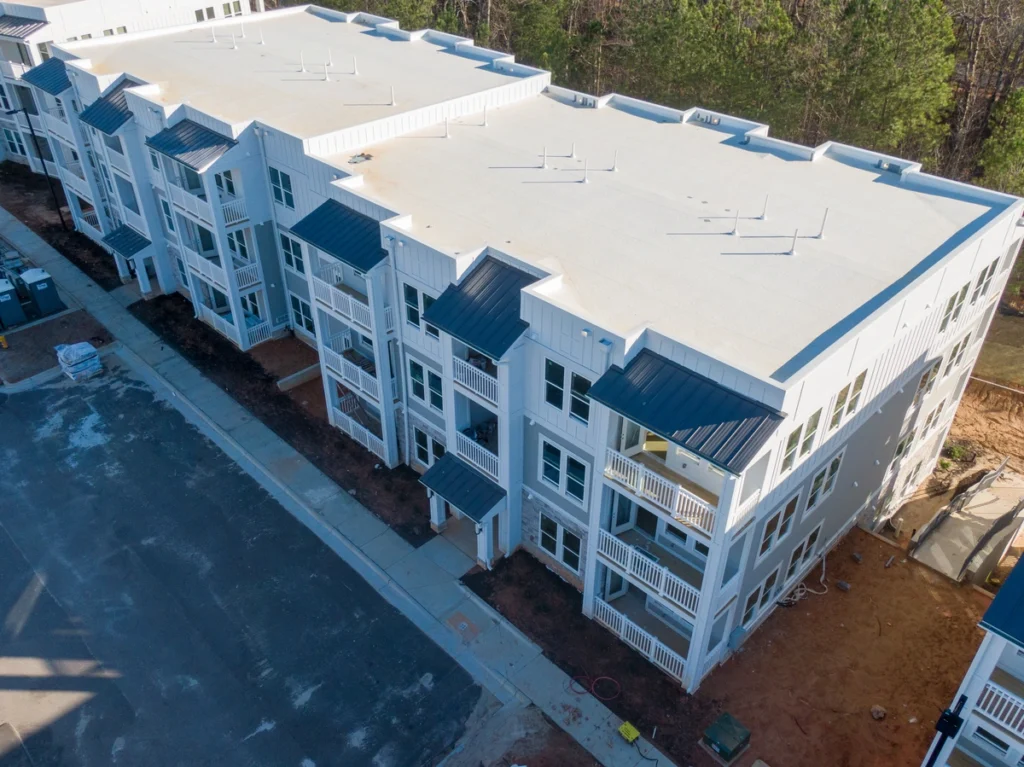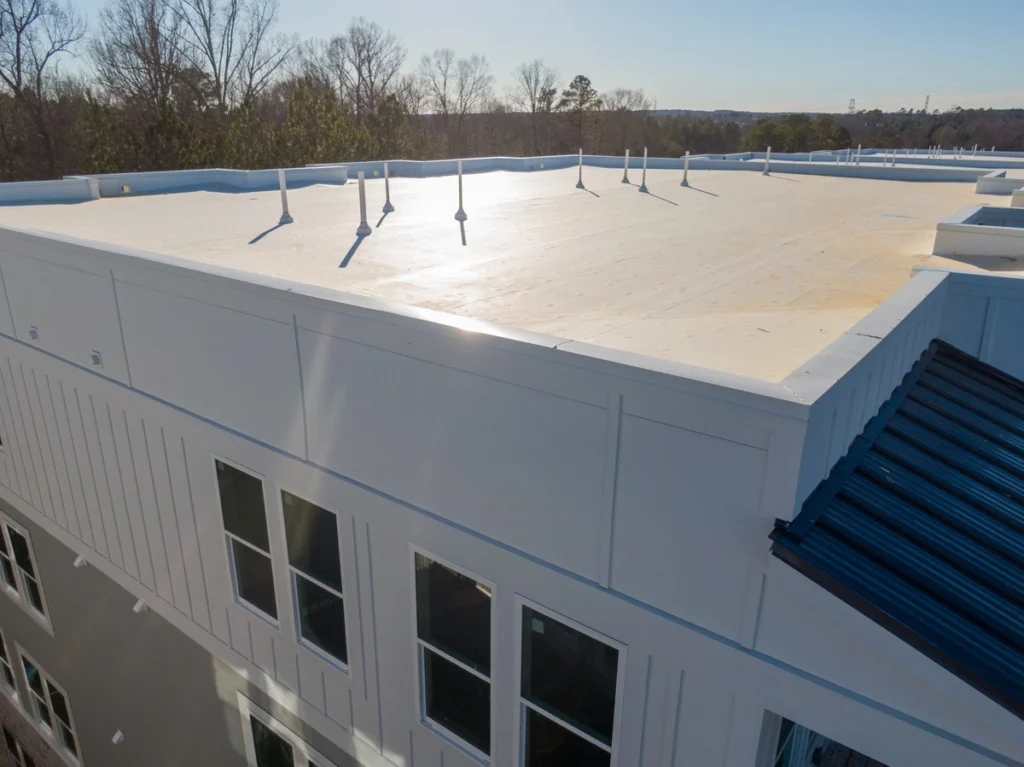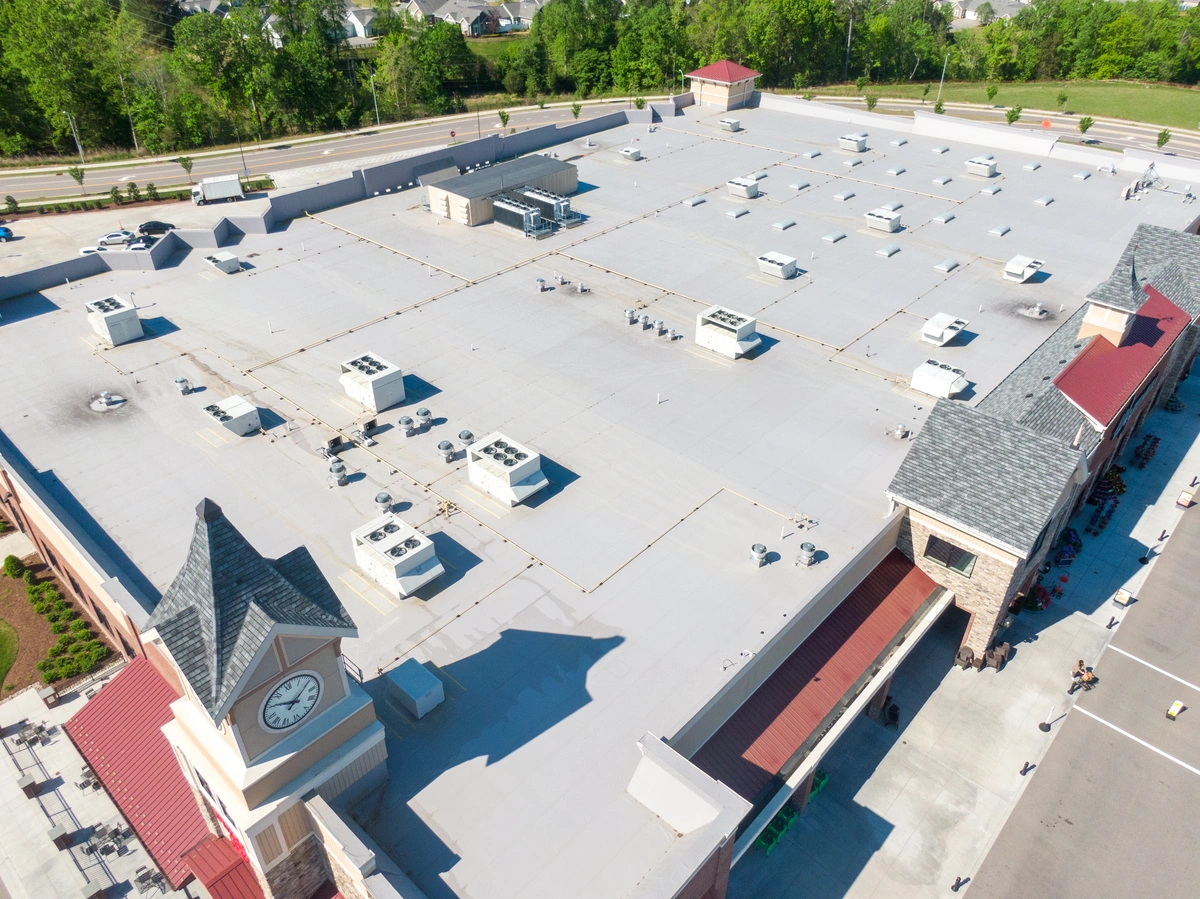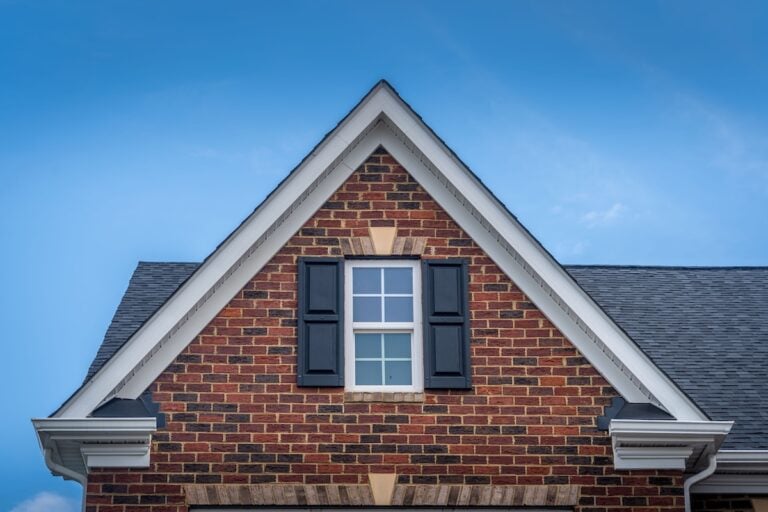If you’re a commercial property owner considering a new roof, you’ve probably come across the term TPO roofing. What is TPO roofing, and why is it becoming increasingly popular? We’ve got the facts that you need to know!
In our expert blog, we’ll answer all your questions about TPO roofing, from:
- What it is
- Its pros and cons
- Cost
- Lifespan
- Maintenance tasks
What is TPO Roofing?

Thermoplastic Olefin (TPO) roofing is a type of single-ply roofing membrane designed for flat or low-slope roofs. Composed primarily of polypropylene and ethylene-propylene rubber, TPO membranes combine the durability of rubber with the flexibility of plastic.
History and Evolution
TPO roofing was first introduced in the 1990s as a more affordable and environmentally friendly alternative to other single-ply roofing systems like PVC (Polyvinyl Chloride) and EPDM (Ethylene Propylene Diene Monomer). Since then, it has gained traction in both commercial and residential sectors due to its energy efficiency and cost-effectiveness.
How TPO Roofing Works
TPO roofing membranes are available in different thicknesses, typically ranging from 0.045 inches to 0.080 inches. They come in large rolls and are installed by mechanically fastening, fully adhering, or ballasting the membrane to the roof deck. The seams are then heat-welded to create a watertight seal, ensuring excellent protection against leaks and water damage.
Pros and Cons of TPO Roofing
Before making a decision, it’s essential to weigh the benefits and drawbacks of TPO roofing.
✅ Pros of TPO Roofing
- Energy Efficiency: TPO roofing membranes are highly reflective, which means they can reflect a significant amount of the sun’s UV rays. This reduces the heat absorbed by your home, leading to lower cooling costs during hot months. The U.S. Department of Energy considers TPO roofing one of the most energy-efficient roofing options available.
- Durability: TPO roofing is resistant to various types of damage, including punctures, tears, and chemical exposure. It also withstands extreme weather conditions, making it suitable for different climates.
- Cost-Effective: Compared to other single-ply roofing systems like PVC, TPO is generally more affordable. Its lower installation and material costs make it an attractive option for budget-conscious homeowners.
- Environmentally Friendly: TPO membranes are 100% recyclable and do not contain harmful chemicals like chlorine. This makes them an eco-friendly choice for homeowners looking to reduce their environmental footprint.
- Flexibility: The flexibility of TPO membranes allows them to accommodate the natural movement of your home’s structure. This reduces the risk of cracks and leaks over time.
❌Cons of TPO Roofing
- Inconsistent Quality: Since TPO roofing is available from various manufacturers, the quality can vary significantly. It’s crucial to choose a reputable manufacturer to ensure you get a high-quality product.
- Relatively New Technology: Although TPO roofing has been around since the 1990s, it is still considered relatively new compared to other materials like asphalt shingles. This means there is less long-term performance data available.
- Installation Challenges: Proper installation is critical for the longevity and performance of TPO roofing. An inexperienced installer may result in poor seams and weak spots, leading to potential leaks and damage.
Cost of TPO Roofing
One of the main reasons homeowners opt for TPO roofing is its cost-effectiveness. However, the total cost can vary based on several factors.
Factors Affecting Cost
- Roof Size and Complexity: The size and complexity of your roof will significantly impact the total cost. Larger roofs or those with multiple angles and penetrations (such as skylights and chimneys) will require more material and labor, increasing the overall expense.
- Material Thickness: TPO membranes are available in different thicknesses. Thicker membranes generally cost more but offer better durability and protection.
- Installation Method: The method used to install the TPO membrane—mechanically attached, fully adhered, or ballasted—can also affect the cost. Fully adhered systems tend to be more expensive due to the additional adhesive required.
- Geographic Location: The cost of TPO roofing can vary based on your location. Areas with higher labor costs or fewer roofing contractors may see higher installation prices.
Average Cost
On average, homeowners can expect to pay between $5 to $10 per square foot for TPO roofing installation. This includes both materials and labor. For a typical 2,000-square-foot roof, the total cost would range from $10,000 to $20,000.
How Long Does TPO Roofing Last?

The longevity of your TPO roofing system depends on several factors, including the quality of the material, installation, and maintenance. Generally, TPO roofs have a lifespan of 15 to 25 years.
Factors Influencing Lifespan
- Material Quality: Higher-quality TPO membranes from reputable manufacturers are likely to last longer and perform better over time.
- Installation Quality: Proper installation is crucial for the longevity of your TPO roof. Hiring an experienced and certified roofing contractor can ensure that your roof is installed correctly and will last as long as possible.
- Maintenance: Regular maintenance can extend the life of your TPO roof. This includes periodic inspections, cleaning, and addressing any issues promptly.
Maintenance Tasks for TPO Roofing
While TPO roofing is known for its durability and low maintenance requirements, some tasks are essential to keep it in optimal condition.
🗓️ Regular Inspections
Schedule regular roof inspections, at least twice a year, to check for any signs of damage or wear. Inspections are particularly important after severe weather events, such as storms or heavy snowfall.
🫧 Cleaning
Keep your TPO roof clean by removing debris, leaves, and dirt. Use a soft-bristle broom or a leaf blower to avoid damaging the membrane. You can also use a mild detergent and water solution to clean any stubborn stains.
🧰 Addressing Damage
If you notice any punctures, tears, or seam separations during your inspections, address them promptly. Small repairs can be handled with a TPO repair kit, but more extensive damage may require professional assistance.
💧 Drainage Maintenance
Ensure that your roof’s drainage system, including gutters and downspouts, is functioning correctly. Clogged drains can lead to water pooling on the roof, which can cause damage over time.
👷🏼♂️Professional Maintenance
Consider scheduling regular maintenance visits from a professional roofing contractor. They can perform more thorough inspections, cleanings, and repairs to keep your TPO roof in top condition.
Learn More About TPO Roofing Systems

TPO roofing offers numerous advantages for homeowners, including energy efficiency, durability, cost-effectiveness, and environmental benefits.
If you’re considering TPO roofing for your home, consult with the reputable roofing contractors at Palladium Roofing to discuss your options and get a detailed estimate. With proper installation and maintenance, your TPO roof can provide reliable protection and enhanced energy efficiency for many years to come.
Ready to explore the benefits of TPO roofing for your home? Contact us today to schedule a consultation with one of our experienced roofing professionals. Together, we’ll find the perfect solution to meet your needs and budget.





